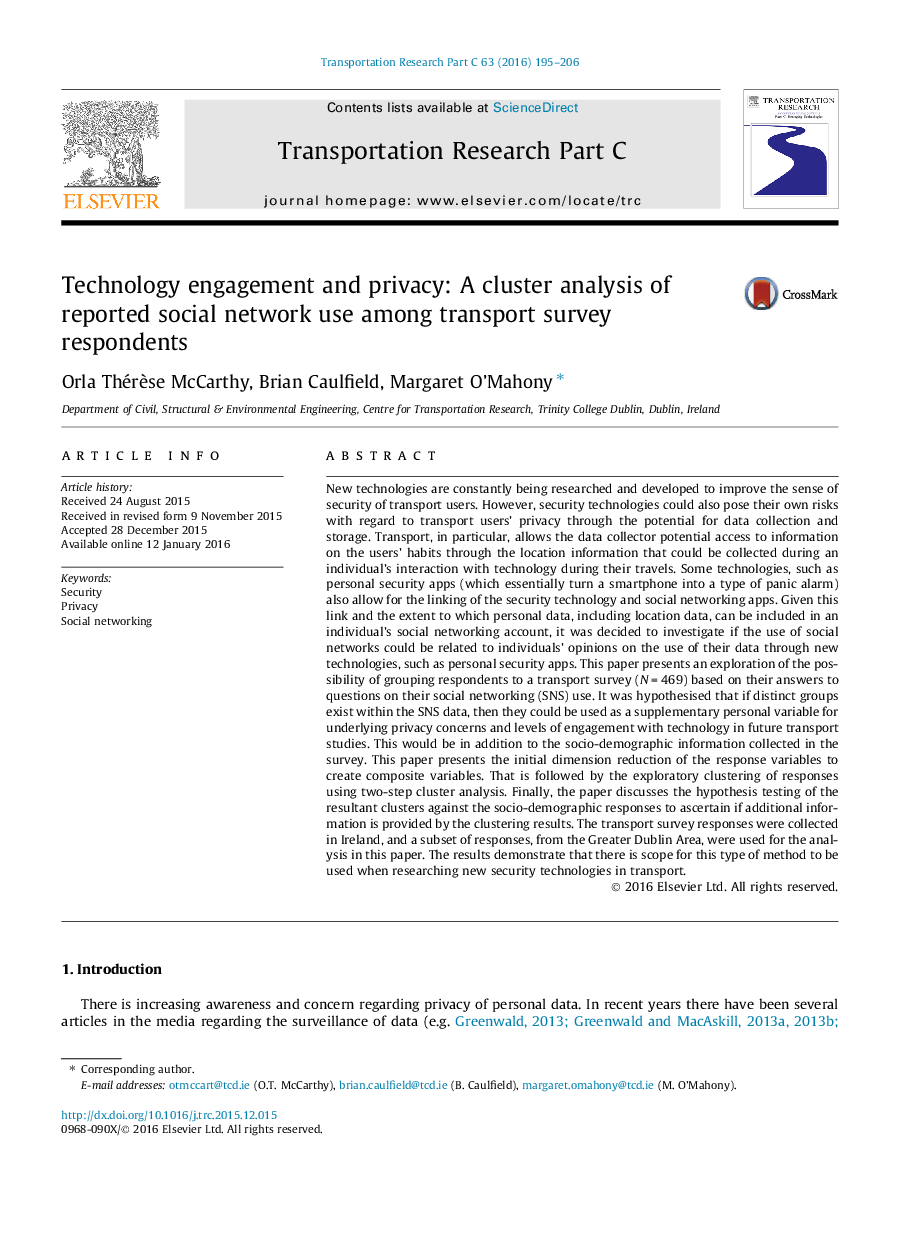| Article ID | Journal | Published Year | Pages | File Type |
|---|---|---|---|---|
| 526319 | Transportation Research Part C: Emerging Technologies | 2016 | 12 Pages |
•Explores grouping transport survey respondents based on social networking answers.•Uses SNS grouping as a supplementary variable for underlying privacy concerns.•Applies cluster analysis to a large survey on transport, privacy and security.•Checks resultant clusters for additional information against demo-graphic responses.•This method proves useful when researching new security technologies in transport.
New technologies are constantly being researched and developed to improve the sense of security of transport users. However, security technologies could also pose their own risks with regard to transport users’ privacy through the potential for data collection and storage. Transport, in particular, allows the data collector potential access to information on the users’ habits through the location information that could be collected during an individual’s interaction with technology during their travels. Some technologies, such as personal security apps (which essentially turn a smartphone into a type of panic alarm) also allow for the linking of the security technology and social networking apps. Given this link and the extent to which personal data, including location data, can be included in an individual’s social networking account, it was decided to investigate if the use of social networks could be related to individuals’ opinions on the use of their data through new technologies, such as personal security apps. This paper presents an exploration of the possibility of grouping respondents to a transport survey (N = 469) based on their answers to questions on their social networking (SNS) use. It was hypothesised that if distinct groups exist within the SNS data, then they could be used as a supplementary personal variable for underlying privacy concerns and levels of engagement with technology in future transport studies. This would be in addition to the socio-demographic information collected in the survey. This paper presents the initial dimension reduction of the response variables to create composite variables. That is followed by the exploratory clustering of responses using two-step cluster analysis. Finally, the paper discusses the hypothesis testing of the resultant clusters against the socio-demographic responses to ascertain if additional information is provided by the clustering results. The transport survey responses were collected in Ireland, and a subset of responses, from the Greater Dublin Area, were used for the analysis in this paper. The results demonstrate that there is scope for this type of method to be used when researching new security technologies in transport.
